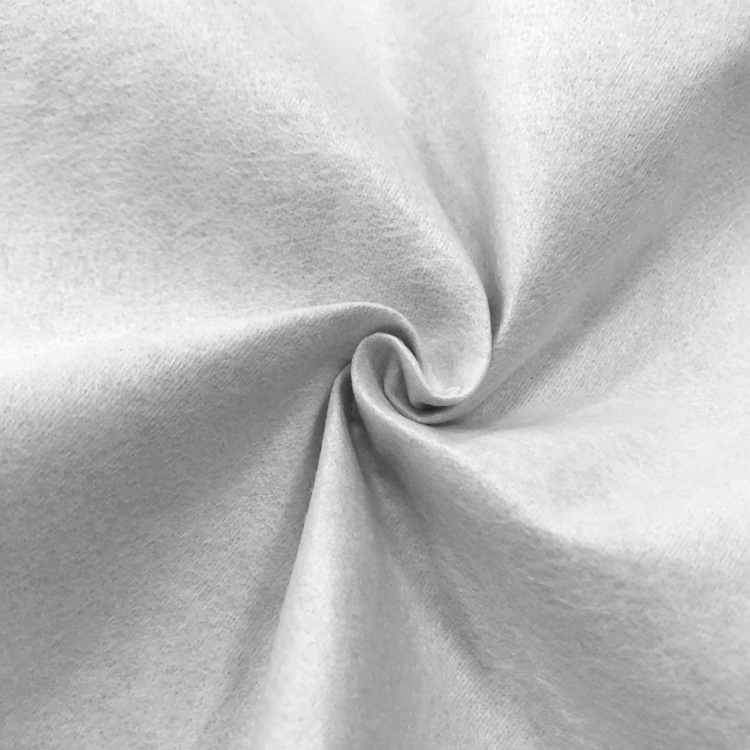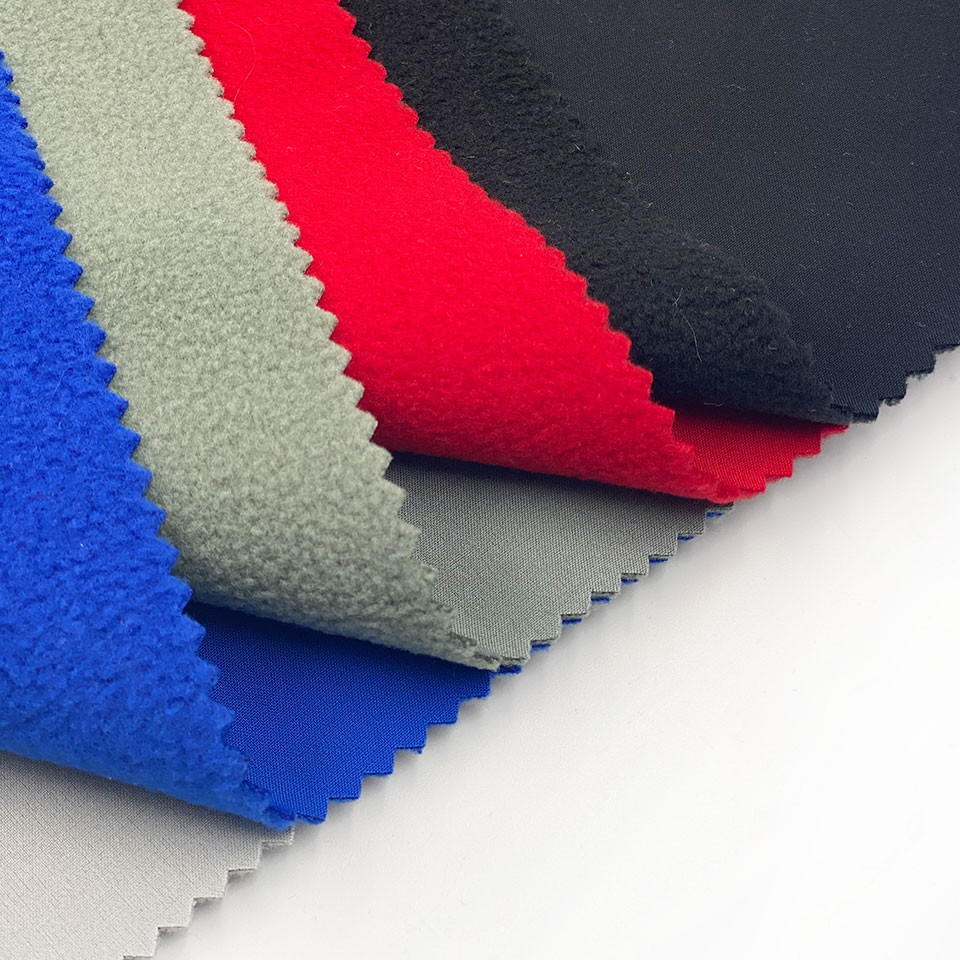After more than a decade of vigorous development, polyester warp-knitted plush fabrics have now become important textiles for high-grade soft toys, high-grade garments, home textiles and other industries. In recent years, with the popularity of international casual wear and the rising demand for innovation in textile market, designers have developed several series of two-color plush and three-color plush fabrics. It greatly enriches the style characteristics of polyester warp knitted plush fabrics and stimulates and leads the market consumption demand.

Related product parameters
Product specification.
Raw material.
Weaving process
The polyester warp knitted pile fabric woven on RD series double needle bed Raschel warp knitting machine is selected for development test. This series of machine has 5~7 comb pecten. The double needle bed warp knitted fabric is composed of bottom tissue and pile, and the bottom tissue determines the main technical characteristics of the fabric. The general bottom tissue is often woven by two comb pecten, comb pecten 2 and comb pecten 5 weave the chain tissue, comb pecten 1 and 6 weave the weft lining tissue, and the weft lining is often used in the structure of 4 or 5 needles. Generally, it is not allowed to be less than 3 needles, so that the woven bottom cloth has less lateral extension and more stable structure. Bottom cloth of the braided chain coil not only determines the longitudinal extension of the fabric, but also directly affects the holding fastness of the pile. The pile fabric is braided with an open chain, the purpose of which is to make the fabric loops straight and the fabric surface clear and flat.
Predeformation process
High-temperature pre-shaped mainly to achieve the following purposes: to make the fabric in the oil agent fully volatile removal; make polyester macromolecule arrangement of neatness to improve, eliminate the internal stress of the fiber; so that the fabric heat shrinkage is controlled, the fabric in the subsequent high-temperature processing process is not easy to occur shrinkage.
Predefined process conditions: specific process requirements are determined according to the species specifications.
Dyeing process
Polyester knitted fabric is generally used after dyeing without solid color, but after printing plucking dye pulp and then solid color, in the process of solid color, the ground color dye at the printing is destroyed, while the dye without flowers part is fixed, this method is called anti-pulling dye method.
For the plucking white printing varieties, especially for the fabric wool surface plucking color whiteness requirements of varieties, the selection of pluckable dyes is quite important. After a large number of screening tests, we choose Fino disperse pluckable dyestuff with good plucking effect, high dyeing stability and good reenactment for ground color dyeing.
Considering the plucking effect of fabric plucking printing, we use high temperature and high pressure overflow rope dyeing method to dye, and make appropriate adjustment to the dyeing process, the dyeing temperature is controlled at 110-115℃, and the dyeing high temperature holding time is shortened accordingly. Its main purpose is not only to allow the dye bath in the dye to absorb the dye, but also to make the fabric dyeing fastness is not high, so that is conducive to the latter plucking white.

Dyeing process prescription and conditions.
Dyeing process curve diagram.
In the dyeing can be added to the appropriate amount of fluorescent whitening agent resistant to plucking dye, in order to improve the whiteness of the pile surface of the fabric after plucking color.
After the end of dyeing and cooling to 80 ℃, open the overflow water washing, so that the fabric is fully cleaned, remove the floating color, in order to reduce the consumption of the floating color to plucking dyeing agent when plucking dye printing.
The fabric is dried by dewatering machine, and dried and shaped by shaping machine after unfolding by the whole cloth machine, so as to make the fabric fluffy, consistent in wool direction and stable in size. When drying, the drying room temperature should not exceed 120℃, the circulating air volume should be opened to the maximum, and the speed should be as slow as possible, so that the fabric can be dried. Keep the speed of the car evenly, shall not stop at will, so as not to affect the effect of color extraction.
Drying process conditions.
Drawn dyeing printing
Plucking dye printing is in the dyeing fabric printed on the color paste containing plucking agent, destroy the ground color dyes, to achieve a partial elimination of color, or in the elimination of color at the same time, and printed on the printing process of another color. The former is called plucking white, the latter is called color plucking.
The anti-drawing printing of disperse dyestuff is a perfect combination of dyeing and printing in the process by using the different reaction characteristics of dyestuff to reducing agents, alkali agents, metal salts, etc., and mechanical action. The anti-dyeing printing products have exquisite patterns, clear outlines, and no white on the edges of patterns and ground colors.
The formula of white plucking printing paste.
Plucking dye printing is carried out on the roller printing machine, the advantage of the roller printing machine is that the depth of plucking dye printing can be well mastered, and the depth of the pattern can be achieved by controlling the depth and shape of the pattern roller mesh pattern and the size of the printing paste viscosity.
Vapor steam can make the fiber swelling, moisture absorption, prompt the processing tin decomposition and destroy the pluckable disperse dyes on the fiber with pulp part, so that it decomposes and transforms into non-colorful compounds, thus making the fabric show the plucking white effect after washing.
Steaming process conditions.
Water washing is carried out on the flat washing machine, used to wash away the dyestuff decomposed by the reducing agent as well as the residual printing paste and various plucking dye printing auxiliaries, etc., while some of the remaining undyed dyestuff is removed by water washing and soft treatment of the fabric.
When washing, the first slot with cold water overflow rinse, to remove the fabric attached to a variety of highly concentrated pollutants; the second slot with HAC 1g / L acid washing, to remove the odor on the fabric; the third slot (1.5g / L insurance powder + 1.5g / L soda + 1g / L net detergent 209) 70-80 ℃ reduction cleaning; the fourth slot 40 ℃ hot water washing; the fifth slot cold water washing; the sixth slot dip rolling softener 2.5-3.0g/L; to achieve full washing, soft and uniform.
Finished product
After washing, the fabric is dewatered, dried and shaped, and then packed in the finished product inspection. Requirements: the fabric surface is fresh, the color light is pure, the flower outline is clear, the transition of shades is natural, the unit flower back to the cycle to be consistent with the style of front and back, left and right; the feel is smooth and plump, elastic.
Contact: Jeanne yang(MISS)
Phone: 13912652341
E-mail: [email protected]
Add: Room A2216/A2217,Double-Star Building,No 567 New South Middle Road, KunShan City JiangSu Province ,China.